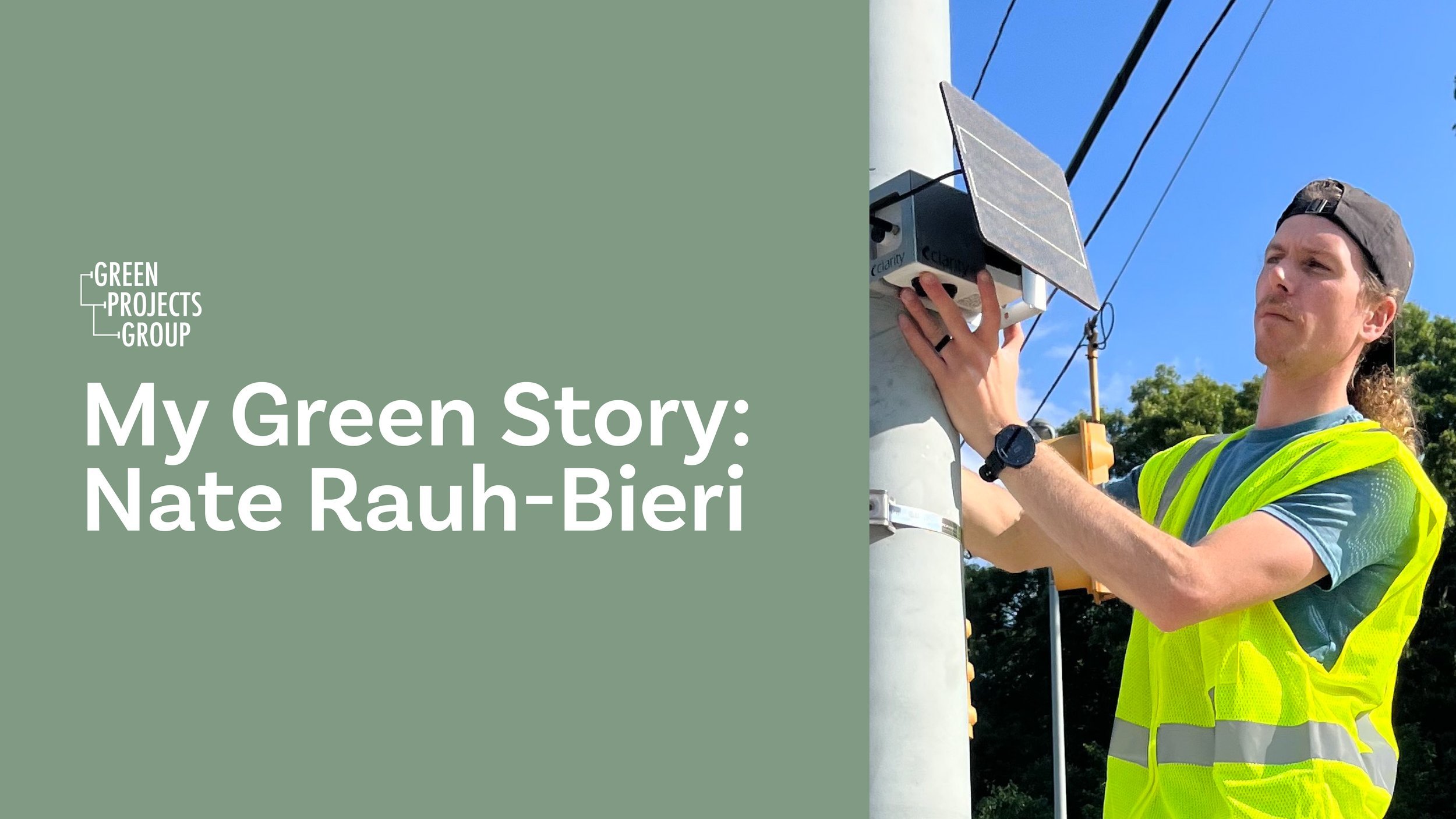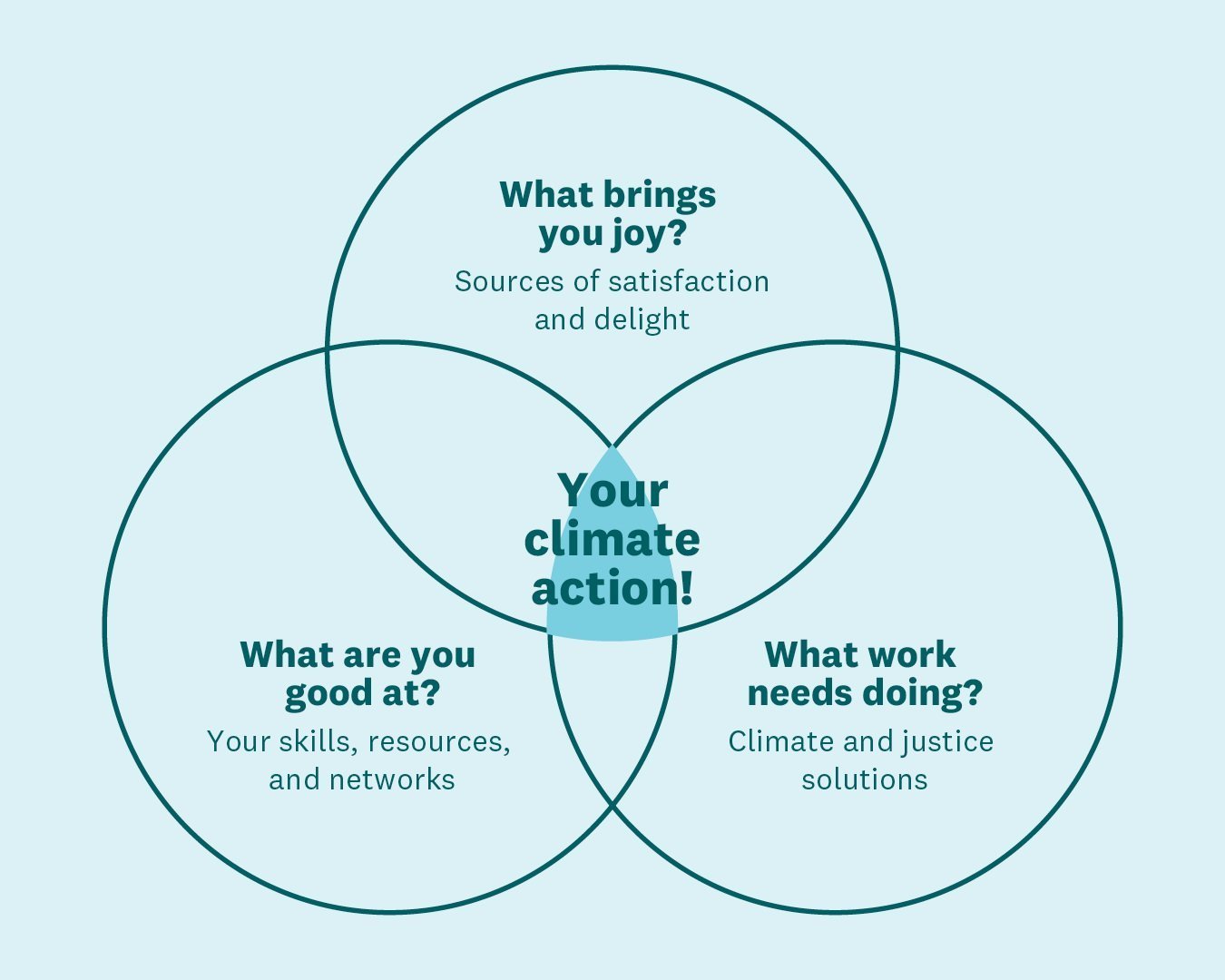MY GREEN STORY: NATE RAUH-BIERI
A very cool dude I’ve met in the climate space happens to live right here in Grand Rapids Michigan and his name is Nate Rauh-Bieri. Nate is an activist in this realm and is a leader in the Grand Rapids Climate Coalition. In this “letter” to you, Nate discusses advocacy, action-taking, and green careers. I hope as you read you can catch a glimpse of your own story (past, present or future), and as always, send any follow-up questions my way. I’d love to chat!
Key themes: knowledge vs. action, the five big things you might have control over, your climate venn diagram.
— Will Gallmeyer, President
HI, I’M NATE 👋
I’m a friend and a big fan of Green Projects Group. And I wear multiple hats as I work for a more sustainable, healthy, and thriving world. Will, my sometimes partner in projects and green scheming, kindly invited me to share with you a bit of my path so far. Here goes!
KNOWLEDGE ≠ MEANINGFUL ACTION
For some people, there is a moment they remember that drove them to take climate action or begin decarbonizing their lives. For me, there wasn’t one moment. It was a dawning process of recognition of the degraded state of our earth system and the ways we are all affected (in different ways) by a world out of ecological balance. And it took me a while to realize: gaining knowledge about these realities—even worrying about them—is not the same thing as taking meaningful action.
NEW CITY, NEW NATE
So when I moved to a new city—Grand Rapids, Michigan—in 2019, I was determined to take more practical steps to counteract climate change and make the world more habitable and humane. So I turned over a new leaf. I sought out a climate advocacy group (what became the Grand Rapids Climate Coalition) and began to get involved, eventually playing a leadership role. I also began to find my voice by writing articles and having conversations with friends and family.
ADVOCACY → COMMUNITY → ACTIONS
Advocacy is important. We need wider systems change, and organizing with groups is a proven way to drive that. But there are other ways to reduce the amount of fossil fuel and other emissions we put into the atmosphere while embracing a better, healthier future.
On climate action, there are actions only you or I can take: the particular conversations we can have, skills we can offer, relationships we can impact. These are the actions we can uniquely contribute to our communities.
But there are also many tangible actions many of us can take to help our society-wide energy transition, and the sooner we take them the better. (I say “many of us” because people have different levels of life advantage; some actions are simply not feasible for everyone.) These are the things that simply need to happen, person by person, household by household, on the way to society drawing down emissions to nearly nothing. These include plant-rich diets, reducing food waste, buying less stuff, voting for sustainability with our ballots and our dollars, adopting clean energy where possible, and so on.
A big action step in this “many of us” category, for us as GPG readers, has to do with energy efficiency: improving our homes’ performance while making them greener. We can accomplish this by, for example, insulating and using LED bulbs or vampire power strips (I hear shop.greenprojectsgroup.com is a great place to shop for these items).
THE BIG FIVE
Then there are some key, highly impactful actions only some of us can take: electrify all of the machines in our lives, such as our wheels, furnace, stove, dryer, and hot water heater, to name the common big five. I have begun swapping my house’s machines (love my induction stove!) making it more efficient in various ways, planning future machine swaps, and I try to bike places whenever feasible. But there is plenty more I can still do on this front. I am excited to keep taking steps!
MAKING A GREEN CAREER
Beyond doing community advocacy and taking action steps to decarbonize my life, another big area of climate action for me has had to do with my career.
I recently shifted my career toward work where I can put core hours of every week toward climate solutions. In my case, I didn’t have technical skills, so it took me a transition period, and additional training, to make this switch. (Of course, more and more, every job can be a “climate job”—it can help the world move towards drawdown. For many people, the skills they have right now are badly needed for the energy transition. Ever thought of becoming an electrician?). But I’m happy to say I now am in a job working with communities to track and improve air quality, which means tackling sources of pollution. I also do consulting on the side, helping people and organizations with their pro-environmental projects.
CLIMATE VENN DIAGRAM
That’s some of my path so far. I’ve found it has taken me a while to figure out where I can personally be most useful; and this is a continual process. So if you’re not sure right away what to do or where to focus your time and energies, that’s okay. Use this climate venn diagram to determine the action(s) only you can take, then just try things out and learn by doing:
Image courtesy of https://www.ayanaelizabeth.com/
On the “actions most of us can take” front, if you decide your climate action(s) includes swapping your machines, there are many good resources available. If you need assistance with this, or greening your home or appliances in general, Will at Green Projects Group has got you.
Thanks for reading about my sustainability path so far. I hope you’ve found something here to be helpful for your own path!


